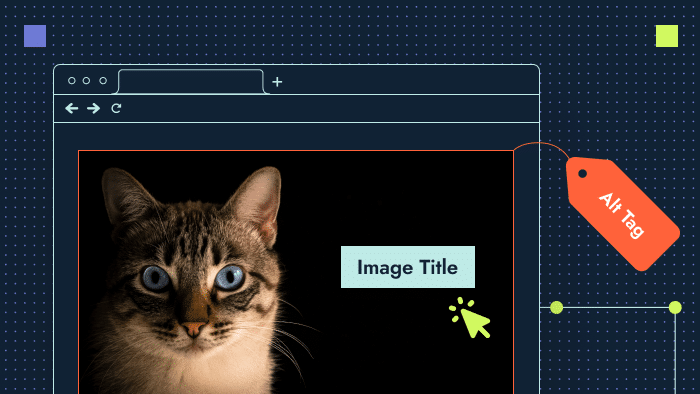Whether you’re launching a new B2B SaaS product or making an announcement of leadership change, you know it’s time for a PR blast. You write a newsworthy press release but should you also optimize it for SEO?
Let’s discover if press releases are still relevant for SEO in 2023. If done correctly, then the answer is yes. Let’s find out how.
What is a press release?
A press release is like a spotlight for your news. It’s a way to tell the world about something important your company or organization is doing.
When something noteworthy happens — maybe a new SaaS product launch, an event or a big milestone — you write up the key details in a press release. You then send this document to journalists, bloggers and other media folks interested in spreading the word
Use cases for press releases in B2B SaaS
Businesses leverage press releases for many reasons. Here are the top use cases:
1. Announcing news, events and products
Press releases are crucial in disseminating significant organizational updates such as a new product, a merger, a change in leadership or an award recognition. Here is an example of a press release by SaaS Alerts on launching their new product: Fortify.
2. Building PR and attracting media attention
Press releases are the backbone of public relations. They are strategic tools to shape public perception and maintain a positive organizational image.
Companies use press releases to capture the attention of journalists and media outlets. A well-crafted press release has the potential to generate media coverage, thereby increasing the visibility and credibility of the organization in the eyes of the public.
This press release by Box emphasizes the significance of their partnership with CrowdStrike in combating cyber threats.
3. Handling business crises
In crises, press releases provide a controlled narrative. By fostering media relationships, engaging stakeholders and contributing to reputation management, press releases play a crucial role in sustaining a favorable public image.
Here is an example from a press release on Cision:
4. Improve corporate communication
Press releases enhance corporate communications, especially when announcing significant leadership changes like a new CEO or CFO. By delivering clear and consistent messaging, these releases inform stakeholders (e.g., investors, customers, employees) about the executive’s qualifications and strategic vision, fostering transparency and instilling confidence.
Here’s an example from Brinqa announcing their new Chief Customer Officer.
5. Introducing partnerships
Press releases provide a formal platform to communicate key details, benefits and objectives of business partnerships, generating positive media coverage. By leveraging press releases to highlight shared values and mutual benefits, organizations enhance visibility and credibility in the industry.
This is an example of a press release by Sedna introducing their partnership with Spot Ship.
How press releases evolved throughout the years
Organizations have used press releases for public relations and communication for over a century, but their connection to web search optimization has developed more recently. Let’s review this history:
1. Traditional press releases (pre-internet era)
Before the internet, organizations primarily used press releases to communicate with journalists and media outlets. Companies would send physical copies of press releases to newsrooms to get coverage in newspapers, magazines and on television.
2. Transition to digital (late 20th century)
With the rise of the internet, press releases transitioned from traditional print to digital formats. Companies began distributing press releases via email and online platforms such as news websites and corporate blogs to reach a wider audience.
3. SEO and online visibility (early 2000s)
As search engines like Google became more prominent, businesses recognized the potential for press releases to impact online visibility. Press releases could include keywords and links, influencing search engine rankings.
4. Proliferation of online press release distribution services (mid-2000s)
The mid-2000s saw the emergence of online press release distribution services (e.g., PR Newswire, Business Wire and GlobeNewswire), which allowed companies to submit and distribute their press releases to various online platforms such as Google and social media.
Distributing press releases then became a common SEO strategy, because it helped in link building: when you put out a press release, you’re not just sharing news; you’re getting your website out there with backlinks.
The effect of press releases on SEO
The backlinks from press releases make search engines see your site as more authoritative, helping it climb up the results page. Plus, when you drop in relevant keywords in your press release, you tell search engines what your site is about. Sharing press release links on social media also indirectly nudges search engines to notice your site more.
SEO experts caught on to the idea that links from reputable news sites could boost their rankings. They started churning out press releases left and right, covering everything under the sun — even things that had nothing to do with their business.
The goal? Get those backlinks and referral traffic from reputable news sites to climb up the SEO ladder. It became less about real news and more about trying to trick the system.
Algorithm changes to ignore links from press releases
Google caught wind of it and tweaked its algorithms to start penalizing sites that have unnatural backlinks. Google started weighing the quality of backlinks more heavily than just the sheer quantity. It also made it mandatory for news sites to have nofollow links. (rel=”nofollow”).
The “nofollow” attribute in HTML informs search engines not to follow specific links to prevent manipulation of rankings. It helps maintain the integrity of the results by indicating which links should not influence page rankings.
This shift made it harder for people to game the system with irrelevant press releases. Google aimed to prioritize valuable, relevant content over random press releases, trying to score SEO points.
Here is what Google’s John Mueller said about press releases back in 2018:
“We try to ignore links from things like press releases because we know, in general, companies put the press releases out themselves. So any links in there are essentially placed by themselves.”
Is the press release still relevant in 2023?
If you’re not scoring SEO points from news site links, is it still worth throwing press releases into your digital strategy?
Quick answer: Yes.
But here’s the critical deal: you’ve got to nail down why you’re sending that press release. It should be noteworthy.
Benefits of press releases for SEO
To maximize the SEO benefits of press releases, it’s crucial to focus on quality, relevance and proper optimization. You must ensure that your press releases provide valuable information and are distributed through reputable channels to garner the most significant impact on your website’s search visibility.
Here are top four reasons why press releases help with your SEO efforts:
1. Increase in backlinks
When a press release is distributed through reputable news outlets and websites, it often includes links to your site (even if they are nofollow links, you might get referral traffic). These backlinks are crucial for SEO, as search engines consider them a vote of confidence in your content. Quality backlinks from authoritative sources improve your rankings.
2. Enhanced search visibility and brand exposure
Press releases improve your website’s visibility when optimized with relevant keywords. When journalists or individuals search for information related to your industry, your press release may appear, increasing the chances of attracting organic traffic to your site.
Also, distributing press releases contributes to brand exposure. When your organization is mentioned in various online publications, it increases brand awareness. Improved brand perception and heightened visibility result in more branded searches, positively impacting your overall SEO.
3. Content syndication
Various news outlets and websites often pick up and republish press releases. This widespread distribution results in your content reaching a broader audience and generating additional backlinks.
4. High social signals
When press releases are shared on social media platforms, they generate social signals that search engines may consider when determining the popularity and relevance of your content. Social engagement contributes to improved SEO performance.
How to optimize a press release with SEO in mind
Writing a press release that ranks well can be tough. Let’s streamline the process and enhance your press release strategy by incorporating these SEO best practices.
1. Create a captivating headline
While creating a press release for SEO, the opening five to seven words carry serious weight in the eyes of search engines when judging its authority. Add the most valuable information in this header section to maximize the impact.
In this press release, Canary Technology uses a catchy headline that excites the readers about the new Canary AI product they are launching. This makes the users read and engage with this press release.
2. Optimize the initial 300 words
Exercise caution with the initial 300 words — they spill the beans on your press release. Integrate the right keywords (but don’t go overboard) to help search engines grasp the context of your release. Also make sure you use original content. According to Sprout Social, 38% of the brands prefer original content over something that is trendy.
According to a study by Cision, here are the most overused words that we must avoid while writing our press releases:
3. Conduct keyword research
Handpick the perfect keywords using tools like Google Keyword Planner, Semrush, Ahrefs etc. These SEO tools streamline keyword research and guide you on which ones to prioritize based on search volumes and keyword difficulty. Use these keywords as your anchor texts.
4. Use infographics, images and videos
Adding multimedia helps increase search traffic by reducing the bounce rate and increasing the on-page time. Using correct and relevant keywords is also essential for adding image alt text and optimizing the videos on the press release. In a media survey conducted by Business Wire, journalists give 57% importance to press releases with infographics followed by contact information and company background.
Here is an example from a press release from NASA showing a visualization of total carbon dioxide in the Earth’s atmosphere.
How to share press releases
Now that you have created your press release, the next step is to share it with the right audience and through the right channels. Here are my favorite tricks:
1. Leverage news wire services for the press release
When it comes to spreading the word, hitting up suitable news wire sites is critical. You need to do your research to find out which news press and journalists are best suited for your news. If you have a B2B SaaS press release, don’t send it to the sports editor. Make sure to go with your industry-specific news wires.
2. Engaging with the right journalists
After you’ve sent it out to the right journalists, follow up with the journalists you’ve got in mind. Call them and email them; gauge their interest and be ready to jump into interviews or dish out more info if they’re hungry. You can use many websites, such as Muck Rack, to find the most relevant websites and journalists for your press release.
3. Use social media channels
Give your press release some social love. Share it on social media such as LinkedIn.
You can publish it on your company’s social media hangouts. Using social media will give it the publicity that it needs.
4. Monitor and analyze performance
Once your press release is released, keep tabs on its journey. Track where it’s popping up in the media and who’s talking about it on social. Take a moment to crunch the numbers and analyze how well your release is performing. Tools like Meltwater offer comprehensive media monitoring and analysis across online news, social media etc.
Business wire platforms to avoid for press releases
Putting out a press release on a less familiar or not-so-well-known business wires platform works against your goal of showing up prominently for the terms that matter to you.
Here is what you should check before getting backlinks from a website.
1. Credibility and reputation
Avoid websites with a poor reputation for accuracy, fact-checking or unbiased reporting. Verify their track record for spreading misinformation or fake news.
2. Domain authority and trustworthiness
Evaluate news websites’ overall trustworthiness and domain authority. A week domain authority score falls between 0-20. Anywhere between 20-30 is average and between 30-50 is good. Opt for backlinks from reputable and authoritative sites to boost SEO.
3. Content quality and relevance
Steer clear of sites with low-quality or spammy content. Prioritize backlinks from websites relevant to your industry, ensuring content aligns with ethical standards.
4. Linking practices and penalties
Be cautious of manipulative linking practices, such as buying/selling links or participating in link schemes. You can check for the penalties using tools like Google Search Console.
5. User experience and editorial policies
Consider the overall user experience, avoiding sites with excessive ads or lacking security. Review editorial policies to ensure adherence to ethical journalistic standards.
Are press releases even more critical in an SGE world?
With the digital world moving towards generative AI, Google will also integrate search generative experience (SGE) into the results page. The results from SGE will take the first fold on the SERPs. This intelligent data will be the data that Google has collected over some time.
The factors that Google might consider while showing SGE results are backlinks and the authority of its source. These latest developments reinforce the importance of creating press releases with substance.
Let’s optimize your press releases for SEO
Press releases are a valuable SEO asset only if you play by the rules I discussed in this blog. Focus on reaching out to the right folks – think niche publications and individuals genuinely interested in your noteworthy event.
You need a solid marketing strategy that blends web design, content writing, promotion and media outreach. It all starts with a clear goal, so if you’re lacking one, it’s time to get on that.
Need help from professionals who can help you strategize, write and optimize press releases for your website? Shoot us a message.














